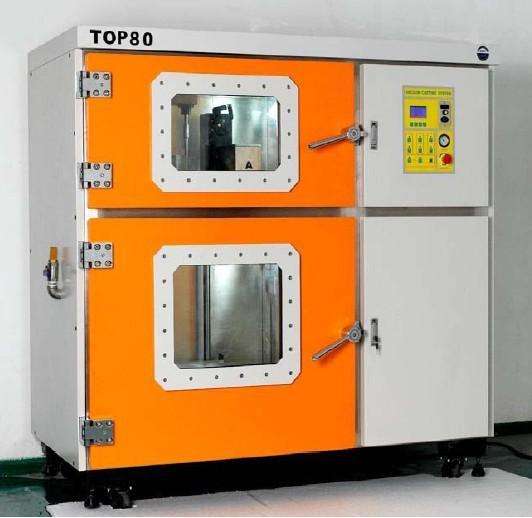It is a slightly slower process than SLA alone because of the additional steps involved in the process, some of which are manually intensive. The time to manufacture depends on the desired characteristics of the part, with size being a key factor as this affects the curing time of the material.
Small numbers of parts are made from a single master mould, which is made using an SLA master model. The mould is made from silicone rubber, and the casting made by pouring resin into the mould in a vacuum chamber.
The result is a bubble free casting, ideal for highly accurate, functional plastic prototype parts in very fine detail which replicate patterns, dimensions, profiles and textures.
Vacuum Casting can also produce parts with varying degrees of flexibility or rigidity, in a wide range of colours and materials – as well clear parts.
Vacuum Casting Benefits
Vacuum Casting is a fast and cost-effective prototyping method for producing small numbers of highly accurate polyurethane prototype parts.
Ideal for functional testing and/or marketing
Cost effective
Low volume runs
High quality
Fine detail and accuracy
Range of properties can be achieved to mimic the final product
No requirement for expensive hard tooling.
Vacuum Casting Summary
Process features
Ideal for small runs of highly accurate prototype parts
Short lead times to production
Cost effective, with no requirement for expensive tooling
Properties
Heat resistance
Colours and tints
Fire retardance
Flexibility and rigidity
UV stability
Range of surface finishes
Insert options
Water clear
Flexible polyurethane casting resin grades range
Range of finishes from grades of spark texture, smooth matt and satin to a high gloss finish.
Material simulations
ABS
POM
Elastomers (Range: 25 – 95 Shore A)
Nylon including Glass Filled
Polypropylene
Pre-production applications:
Marketing
Functional testing
Thermal and air flow testing
Assembly line trials
Process Detail
1.The first step is the production of the master part using SLA (Stereolithography).
2.The master part is mounted in a casting frame and a two-part silicone rubber is cast around it to form the mould.
3.The mould cures inside a heating chamber.
4.Once the silicone mould is cured, the master part is cut out. The mould can now be used for casting.
5.The polyurethane resin to be used in the part is prepared with the required colouring agents. Once ready, the mould is sealed.
6.The resin is poured into the mould inside the vacuum chamber using a computer controlled process. The vacuum completely eliminates bubbles and air pockets producing a blemish free finish.
7.The resin part is now cured in a heating chamber.
8.Once cured, the resin part is removed from the silicone mould.
9.The feed and riser are removed, leaving an exact copy of the original.
10.The part can be painted or plated.
11.The part is hand-finished by one of our in-house model makers.
Our Vacuum Casting Machine:



